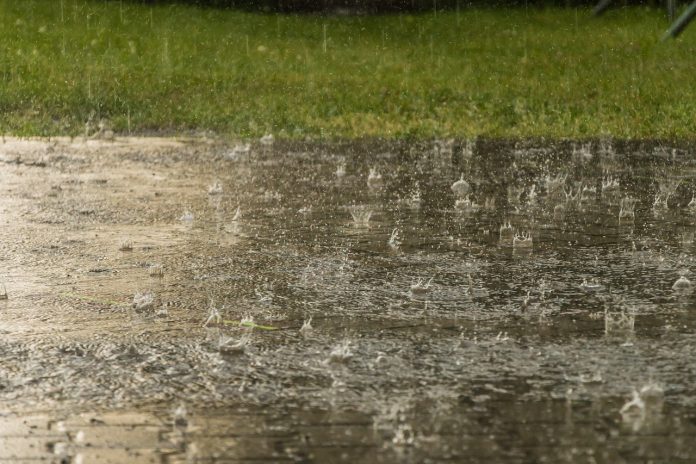A recent article in the New York Times (NYT) claims that coastal cities are “bracing” for climate change, which they claim is making events like heavy rainfall and atmospheric rivers more common and severe. This is false. It is wise for coastal cities to improve their resilience in response to flooding and storms which have occurred throughout history. However, real-world data show climate change has not made atmospheric river events and other instances of extreme rainfall worse.
The article, titled “Coastal Cities Brace for Climate Change,” comes with the ominous subtitle “[t]his week’s atmospheric rivers may only be the beginning.” Writer Manuela Andreoni writes that flooding from recent storms has “battered cities in the South and East Coast,” and “Overlapping atmospheric rivers over the West Coast have brought heavy rains that are likely to come back in the next few days.”
Andreoni goes on to assert that climate change makes these kinds of events more likely, because warmer air “holds more moisture, which means storms in many parts of the world are getting wetter and more intense[.]”
Warm air does holds more moisture than cooler air does, and the modest warming of the past century has occurred alongside a similarly modest increase in overall precipitation in the northern hemisphere, but the U.N. Intergovernmental Panel on Climate Change (IPCC) has found is no direct correlation to flooding. The As pointed out in Climate at a Glance: Floods, the IPCC admits that there is low confidence in even the sign of any changes in the frequency or severity of flood events. Additionally, the cost of floods in the United States in relation to to GDP has dropped over time, despite the fact that infrastructure has increased in value.

The factors that influence extreme precipitation events are more complex than the NYT leads one to believe.
In regards to atmospheric rivers in particular, again, these events are not new nor are they becoming worse due to climate change. As meteorologist Anthony Watts explains in the Climate Realism post “Wrong, Washington Post – History and Data Contradict Claims of Worsening ‘Atmospheric Rivers’;”
[…]a peer-reviewed paper published in 2020 used satellite and sounding data and found there has been no trend influencing tropical lower stratospheric water vapor, in the region these west coast atmospheric rivers originate.
Even more powerful than that, a data analysis of global relative humidity data over the land and oceans (where atmospheric rivers originate) and publicly available from the UK Met Office, shows relative humidity actually declining.
Atmospheric rivers and major flooding are historically common on the west coast. The worst known flood in California history occurred in 1862, in which an atmospheric river event dumped an equivalent of ten feet of water between rain and snow on California, resulting in massive flooding in the Sacramento Valley. Core drilling revealed similar and worse floods occurred in the same region in AD 212, 440, 603, 1029, 1418, and 1605.
The NYT also claims that coastal regions are “especially vulnerable to climate change, not just because of storms and floods, but from rising seas and erosion.” These claims have been thoroughly refuted in previous Climate Realism posts, here, here, and here, for example. Coastal areas are obviously vulnerable to sea level rise, but it’s not dangerously accelerating, and other factors such as overdevelopment, land compaction and subsidence, natural geography, and poor water infrastructure are larger factors in determining whether a coastal city is especially flood prone in the United States.
The rest of the article is relatively reasonable, detailing ways that cities are improving their infrastructure to improve storm resilience, such as restoring estuaries and other coastal ecosystems that buffer coastlines from storm surge. Hardening infrastructure is a good idea regardless of climate change. We made this point at Climate Realism, in response to similar previous articles published by the NYT.
The NYT and its writers should examine actual data available regarding flooding, atmospheric rivers, and heavy rainfall, before hyping climate change as a cause of problems with coastal cities. Had they done so, they would find that there is no reason to blame naturally occurring, extreme weather events on climate change, and they would avoid misleading their readership.



















given the horrid state of the temperature record with its poor siting and “adjustments” I am not even sure that we have “warmer air” anywhere besides over major cities … the kindergarten level science of “warmer air holds more water” with no context or even numbers is simply hand waving … warmer air over a desert doesn’t hold more of the non existent water there for example … the difference in evaporation with a temp change of a 100th of a degree simply can’t be accurately measured … heck even a .1 degree temp difference can’t be measured in terms of evaporation … since most of the “increase” in temperature is supposedly happening at the poles I’m not sure using “warmer” to describe air temps rising from -15 to -14 is appropriate …
The NYT is a total embarrassment for a newspaper and anybody who accepts their take on anything scientific in nature has to be really gullible! They never show actual data to prove anything! It’s all conjecture and hearsay mainly slanted toward their political agenda! If people really cared they would look at the valid sources and then realize that this is all about the climate change narrative and pseudoscience instead of reality!